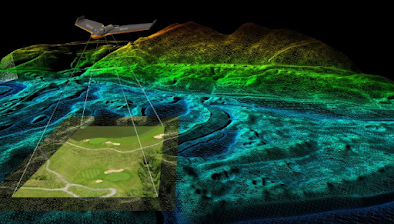Geomatics from data acquisition to mapping applications
 |
|
Lidar from
data acquisition to mapping applications
|
You have probably used a mapping application on your mobile phone or the navigator of your car to reach a destination; you were surprised by a seemingly simple device that is able to display your position very easily? You have traveled the world because of virtual globes or other cartographic apps. Faced with these products and services accessible to all, few people are aware of all the technology needed to collect, store and distribute all this geographic information. It is under the "Geomatics" label that we find most of the concepts and techniques applied to this type of information.
"Geomatics: Discipline for the management of spatially referenced data, involving science and technology related to their acquisition, storage, processing and dissemination." Geomatics is mainly concerned with disciplines such as topometry, cartography, geodesy, photogrammetric, remote sensing and computer science»
Geomatics, as a science, is at the crossroads of many fields. On the one hand, it finds its roots in the basic sciences because the fundamental principles are based on mathematics and physics. On the other hand, its fields of application are multiple and affect the different fields of engineering (construction, planning, and environment) as well as the human and social sciences (economy, geography). The engineering and computer sciences are also there to support all developments in acquisition technologies (GPS, sensors, total stations) and information processing (databases, Internet, GIS).
Geomatics is the collection of tools and methods for retrieving, representing, distributing, analyzing and integrating geographic data. Topography, digital mapping, geodesy and satellite tracking, geographic information systems (GIS), photogrammetric and remote sensing are among the disciplines studied in geomatics.
The term is now used around the world by scientific and professional associations, universities, government agencies and companies. Its essence has made it possible to reflect the rapid evolution of an area that has become a must in the representation of the world around us.






No comments:
Post a Comment